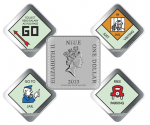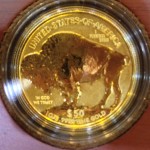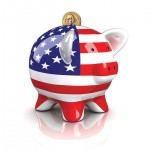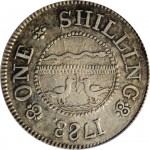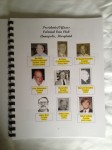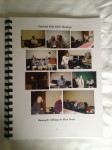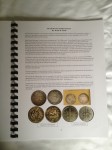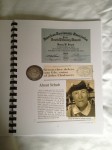October 2020 Numismatic Legislation Review
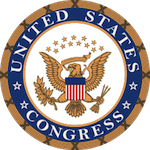 Although many as said a lot about what Congress is doing, numismatically, there is nothing to report. It is typical for Congress to adjourn during October to allow members to campaign. If Congress takes up any business, they believe that it is beneficial to their campaign. Numismatic-related legislation does not make for compelling campaign ads.
Although many as said a lot about what Congress is doing, numismatically, there is nothing to report. It is typical for Congress to adjourn during October to allow members to campaign. If Congress takes up any business, they believe that it is beneficial to their campaign. Numismatic-related legislation does not make for compelling campaign ads.
The slowdown in paperwork for the Government Printing Office, who is responsible for publishing Congress’s documentation, uses the time to catch up. Several bills whose text was not posted to the Library of Congress’s website are available for review. As a result, the updates from October are adjusting titles and summaries based on the publishing of the bills’ text.
The 2020 Lame Duck session will be interesting. I do not expect any numismatic legislation to be considered until clean-up sessions in December.
H.R. 8242: National Women’s Hall of Fame Commemorative Coin Act of 2020
S. 4663: Coin Metal Modification Authorization and Cost Savings Act of 2020
- reduce costs incurred by.taxpayers;
- be seamless, which shall be determined by verifying that the coins will work interchangeably in most coin acceptors using electromagnetic signature technology; and
- have as minimal an adverse impact as possible on the public and stakeholders.
The Mint must notify Congress before making the modification and provide a justification for the modification.
Can we fix the U.S. Mint?
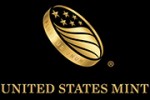 Last March, three members of the Citizens Coinage Advisory Committee met with Rep. Andy Barr (R-KY), a freshman member of the House Financial Services Committee that oversees the U.S. Mint, to pitch the idea of Liberty-themed coins.
Last March, three members of the Citizens Coinage Advisory Committee met with Rep. Andy Barr (R-KY), a freshman member of the House Financial Services Committee that oversees the U.S. Mint, to pitch the idea of Liberty-themed coins.
Initially, the proposal was to issue a series of Liberty-themed coins for the five silver-colored circulating coins but dropped the 5-cent coins after Barr said that there must be no cost to the taxpayer. Currently, the U.S. Mint reports that it costs 10.9-cents to produce the Jefferson nickel and was removed from discussion. What the politicians fail to grasp is that coin production does not cost the U.S. taxpayer anything because all of the money used to operate the U.S. Mint comes from the seigniorage collected on all coins, commemoratives, and tokens sold including circulating coinage to the Federal Reserve. Since the Federal Reserve does not use taxpayer money in its operation, the purchase of circulating coins generates a profit for the government.
Although removing the 5-cent coins from consideration is a wise political move, it demonstrates the illogic and dysfunction of the politics. It also illustrates why the current system of how congress controls the U.S. Mint is unsustainable and needs to be changed.
No other mint in the world is under the same legislative control as the U.S. Mint. Every other major mint are autonomous entities running under the authority of the government required to produce circulating coinage for the country’s central bank and must obtain approval from the central bank to create any legal tender coin. A government can decide that it should produce certain denomination or stop producing a denomination and the autonomous entity must comply.
People who want to discontinue the use and production of the one-cent coin looks to Canada as an example of how a country to stop producing their lowest denomination and be successful. While it is too soon to judge the success and failure of this move, what is lost on people is how the Royal Canadian Mint, a Crown corporation of Canada, is required to comply with the laws passed by the Canadian Parliament. If the Canadian Parliament passes a law that says the Royal Canadian Mint is not to produce any more one-cent coins, than the Royal Canadian Mint does not produce one-cent coins.
While parliament does prescribe that certain coins be made, the Royal Canadian Mint is free to produce coins of its own designs to sell to the public. They work with the Bank of Canada on the approval of designs and the Bank of Canada allows the Royal Canadian Mint to strike coins with a denomination so that these have legal tender status. Most of these coins are bullion and non-circulating legal tender (NCLT) issues sold to investors and collectors for the sole purpose of generating revenues (seigniorage).Nearly every mint operates in the same manner. while the Royal Mint is more conservative in their issues, the Perth Mint, the Mint of Poland, and Austrian Mint operate in a similar manner.
Some countries do not operate a mint even as a public corporation. Countries like Niue, Somalia, and Isle of Man that have produced popular NCLT issues contract their minting to other mints, such as the New Zealand Mint, or to private corporations like the family-owned Pobjoy Mint. Even the government of Israel thought it was best to privatize their mint. After being established in 1958 by then Prime Minister David Ben-Gurion, the Israel Coins & Medals Corp was privatized and sold in 2008 where they continue to operate under the authority of the Israeli government and the Bank of Israel.
Although it could be successfully argued that some of the mints have gone overboard with their bullion and NCLT programs like the Royal Canadian Mint and Perth Mints, it could also be noted that other mints have show great constraint in what they have produced. An example of showing restraint would be the Britain’s Royal Mint and Australian Mint who have concentrated on producing quality and not quantity. These are all models to learn from for the future.Those who would be against privatizing the U.S. Mint immediately point to Article I, Section 8 of the U.S. Constitution that says “The Congress shall have Power… To coin Money, regulate the Value thereof,” as the reason not to privatize the U.S. Mint. While the Constitution gives congress this authority, it does not say that the government has to own the means of production nor does it say that congress has to dictate the design of that money. In its most basic term, “to coin money” means to authorize production of and make legal tender of coins used in commerce (for a full description based on case law, see this section).
An argument used against privatizing the U.S. Mint is to compare what could happen to the U.S. Postal Service. However, the Postal Service is not a government-owned corporation. According to 39 U.S.C. § 201, it is “an independent establishment of the executive branch of the Government of the United States.” While it has many independent powers, it still regulated by congress and subject to insipid rules no private company could ever meet.In a huff, those who argue against government-owned corporation point to Freddie Mac and Fannie Mae as examples of the dangers of making critical government functions private. Unfortunately, these people are reading the headlines and not the reasons for Freddie and Fannie’s problems caused by the recent fiscal crisis. While both companies can be blamed for their parts in the failure of the markets, a lot of their blame can be traced to the laws that congress passed giving them a complicated deregulated environment from which to try to accomplish their goals. Rather than find a way to fix the issues, congress wants to end the programs Freddie and Fannie support and close those entities even though new regulations have been working.
The problem with making the U.S. Mint a government-owned corporation would be the 535 member board of directors (congress) whose knowledge of what it would take to do this right is suspect. This is the same congress that has forced the Postal Service to over pay into its pension fund while forgetting that it has to the power “to pay the Debts and provide for the common Defence and general Welfare of the United States” by shutting down the government or preventing the payment of debt by manipulating the artificial debt ceiling.
It would be possible to make the U.S. Mint a government-owned corporation using the lessons learned from the governance of the Postal Service, Fannie Mae, Freddie Mac, and any number of other world mints. A charter would be established to make the government-owned Mint corporation the sole provider of circulating coins to the federal reserve and that its operations would be managed by a board with representation from the executive branch, legislative branch, and the Federal Reserve. The board would have oversight power over the Mint corporation and work within the parameters set up by the charter.
Provisions of the charter would be that congress would regulate coinage in that nearly every part of 31 U.S.C. § 5112 would be eliminated except for paragraph (a) that describes the denominations and their size specifications. All laws regarding weights, composition, and design with the exception of the first sentence of paragraph (d), would be eliminated.

2013 American Eagle West Point Two-Coin Silver Set with reverse proof and enhanced uncirculated coins.
A new charter would allow congress to designate two commemorative coins per year with a surcharge to be paid to an organization as it does today, but the Mint corporation could create additional non-circulating legal tender coins with its own designs that are made legal tender by following the specifications of the law (e.g., 31 U.S.C. § 5112(a)(10) allows for “A five dollar gold coin that is 16.5 millimeters in diameter, weighs 3.393 grams, and contains one-tenth troy ounce of fine gold.”) and approved by the design board, the Mint charter board, and the Federal Reserve.
The design board would be the Citizens Coinage Advisory Committee. Rather than have two design groups, one that whose purpose outside of reviewing coins is to review architecture, only the CCAC would continue as the approved design board. This way, the Mint corporation would have artistic oversight by a dedicated organization and not have to worry about whether the U.S. Commission of Fine Arts, whose purpose is to oversee the architecture of Washington, understands design and the issues with striking those designs.
This charter can be written in a way to create a special inspector general that would work with the Department of the Treasury to help the executive branch maintain oversight over the new corporation.Freeing the U.S. Mint to be more autonomous and provide them the ability to create new products will not cost the taxpayer anything. In fact, it has the potential for the new corporation to earn more than it does now with new products on the market because if you notice, I never said to get rid of the U.S. Mint Public Enterprise Fund (31 U.S.C. § 5136). On the contrary, the new Mint corporation should be required to set an operations budget and leave the budget plus 25-percent in the Public Enterprise Fund for emergencies. The rest should be deposited in the account of the company’s shareholders: the General Treasury of the United States of America.
In this scenario, it will not matter that it costs more than face value to manufacture the cent and 5-cent coins. The losses can be made up by selling other products to a world that trusts the U.S. Mint—a world that buys more bullion and collectibles from the U.S. Mint than any other country. Imagine how much the new Mint corporation could help reduce the deficit if allowed to be run more like a commercial enterprise than an over regulated government agency.
If it is said that the private sector can do better than the government, here is one way to put that rhetoric to a test!
Today’s Poll
What do you think? In addition to writing a comment below, how about participating in a poll. Do you think that the U.S. Mint should become a government-owned corporation?
Image of the 2004 Canadian Poppy Quarter courtesy of Talisman Coins.
2013 Niue Monopoly Coin images courtesy of the New Zealand Mint.
All other images are property of the author.
Pocket change nickel type set
The other day I was talking with a someone who was not a coin collector to explain why I liked collecting coins. One of the reasons I mentioned was the thrill of the hunt. To be able to find that one coin to add to a collection or even reaching into my pocket and finding something interesting, even if it was not valuable.
To demonstrate what could happen, I reached into my pocket and happen to pull out what could be considered a type set of Jefferson nickels. I first found the 2012-P nickel that seems to now be in common circulation. Next was a 1982-D nickel with what looks like a filled “D” mintmark. For the time period, the blob for the mintmark was common and not worth anything more than a curiosity.
As I slid the 1982-D aside, I found the reverse the the Keelboat type 2004-P nickel. The person I was talking with was not aware of the Westward Journey nickel program commemorating the Lewis and Clark expedition to the west. I mentioned that the 2005 American Bison design was my favorite. Not only does it have the the American Bison on the reverse, the animal that most represents the country’s westward expansion, but the front has that wonderful bust of Jefferson designed by Joe Fitzgerald.
When I started to look at the last nickel, I said, “oh… this is older.” When asked how I knew before looking at the date, I explained how the relief had changed over the years. Using the four coins in hand, I could demonstrate how the relief and designs have been altered over the years to accommodate striking requirements. Even though the composition of the United States 5-cent coin has not changed since 1883 except for the silver-copper-manganese composition during World War II (1942-45), the U.S. Mint has lowered the relief of the coins in order to make the dies last longer and reduce production costs. According to the U.S. Mint’s 2012 Annual Report (PDF) it costs 10.9 cents to make one nickel. It could be more if the U.S. Mint had to use more dies to strike coinage for circulation.
I adjusted my glasses to see that the coin had the year 1956 then I flipped it over to see if there is a mintmark. When asked why I was looking for the mintmark on the back when it appeared on the front of the other coins, I said that up until 1964 the mintmark on the Jefferson nickel was to the right of Monticello and only if the coin was struck in Denver or San Francisco. Only the War Nickels had a mintmark prior to 1964. Luckily, I was able to demonstrate when a “D” mintmark appeared on the coin.
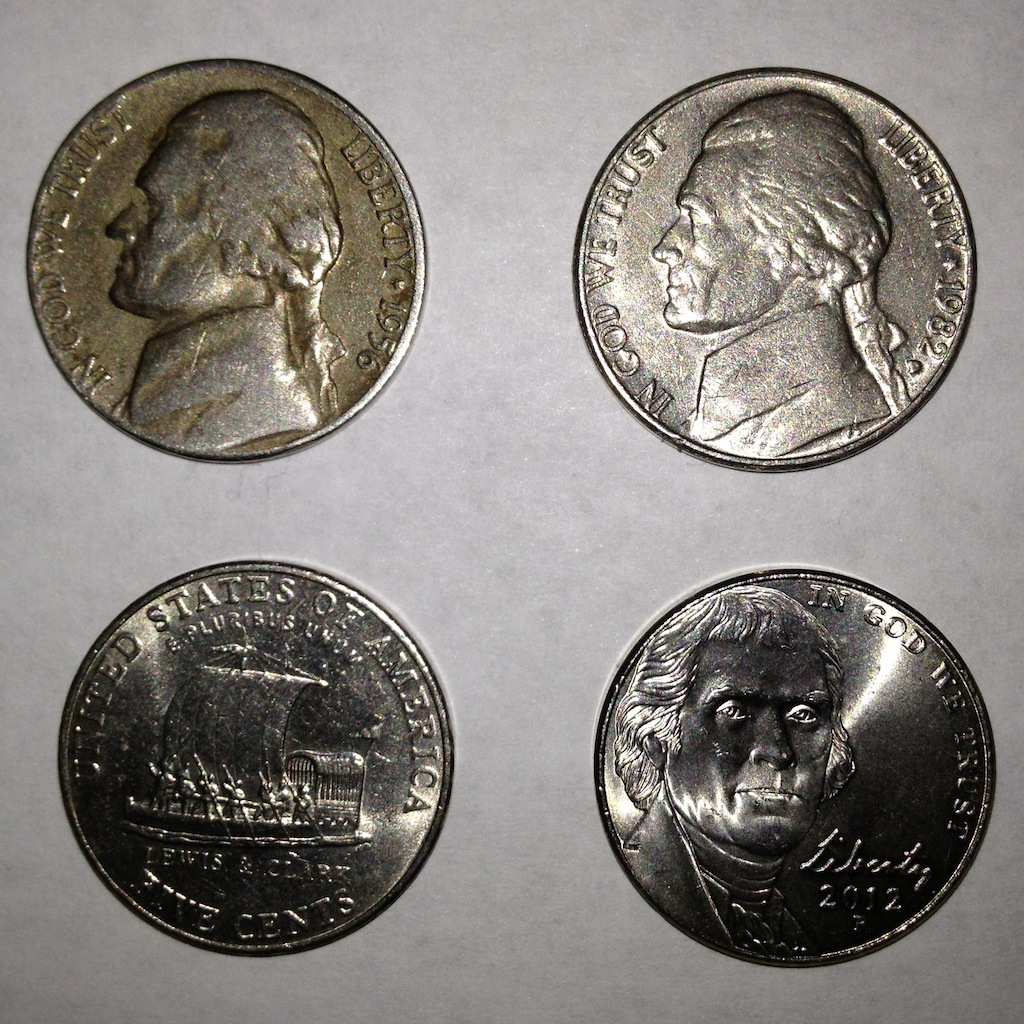
A small type set of Jefferson nickels found in pocket change.
Top row: 1956-D and 1982-P. Bottom row: 2004-P Keelboat design and 2012-P.
The next question was “How much is it worth?” Since the coin could be graded Good-4 at best, I said it would probably be worth 5-cents, face value. I decided to look up the price and saw that it was worth 6-cents! It is hardly worth the effort to sell. But the person that I was showing the coins found my little pocket-change type set was interesting.
Now that I have written about them, all four coins will go back into circulation for someone else to find. Who knows, maybe a young numismatist will find the 1956-D, think it is cool and add it to their collection. If you are in the Washington, D.C. metro area, you can be on the lookout for the 1956-D and other nickels I just wrote about. Happy change hunting!
Free is always better!
 If you have not heard, the U.S. Mint is offering free standard shipping starting today at noon eastern time through September 30, 2013. This means that all orders made over the telephone (800-USA-MINT or 800-872-6468) or their online catalog will not be charged the $4.95 shipping costs regardless of the purchase price and size of the order.
If you have not heard, the U.S. Mint is offering free standard shipping starting today at noon eastern time through September 30, 2013. This means that all orders made over the telephone (800-USA-MINT or 800-872-6468) or their online catalog will not be charged the $4.95 shipping costs regardless of the purchase price and size of the order.
Expedited shipping will be charged only the UPS 2nd Day Air fee of $12.95.
Bag and box orders will be charged only the $7.95 surcharge.
If your order qualifies for free expedited shipping upgrades by costing more than $300, then your expedited shipping will be free.
Because this offer is only for domestic standard shipping service, international orders will continue to be charged $14.95 + $2.95 per item.
Although the U.S. Mint has not announced why they are doing this, they might feel that they need collectors to spend more money in order raise revenues. Since the U.S. Mint is largely self-sustaining, revenue projections may be lower because of the lowered production, the lack of enthusiasm for commemorative coins, and a reduction in sales of bullion products as the costs of precious metals continue to trade off their highs from earlier this year.
Since this offer will be good through the end of September, I probably will not buy anything from the U.S. Mint at the World’s Fair of Money. After all, I think it will be easier to have my collectibles shipped home than have to schlep it through the airport.
COINS Act Briefing on the Hill
The COINS Act is designed to eliminate the $1 federal reserve note from circulation by increasing the circulation of coins and reducing the circulation of the paper currency over three years. At the end of three years, the Federal Reserve will not be allowed to distribute the $1 not. The bill does allow the Bureau of Engraving and Printing to continue to distribute the $1 note as a collectible for numismatists.
The bill was introduced by Sen. Tom Harkin (D-IA) and co-sponsored by Sens. John McCain (R-AZ), Tom Coburn (R-OK), Mike Enzi (R-WY) and Mark Udall (D-CO). It supports the GAO reports that suggest the potential savings of using the coin over paper will be $13 billion.
If you are in the Washington, DC area and what to talk about the COINS Act, the briefing will be held a noon at the Russell Senate Office Building in Room 385. Attending the briefing for the Council for Citizens Against Government Waste and The Dollar Coin Alliance:
- Aaron Klein, Former Chief economist for the Senate Banking Committee and Deputy Assistant Secretary of the U.S. Treasury
- William Christian, Director of Government Affairs, The Council for Citizens Against Government Waste
- Former Congressman Jim Kolbe (R-AZ), Honorary Co-Chair of the Dollar Coin Alliance
If you cannot attend the briefing, take the opportunity to contact your senators to let them know how you feel about the bill.
Colonial Coin Club celebrates 50 years and counting
The Colonial Coin Club was founded in 1963 by members of the Baltimore Coin Club who commuted to meetings from Annapolis. While not that far of a commute, these members felt there was enough interest to form their own local club. The first meeting of the Colonial Coin Club was March 19, 1963. Fifty years later they are still a vibrant club serving collectors in the Annapolis area.
With my busy schedule, not only did I welcome the one night diversion to join the celebration at a nice restaurant in Gambrils, Maryland, but I had a chance to speak to congratulate them, encourage them to continue their good work for the next 50 years and beyond, and invite them to participate with the state organization and to visit the club I am president of, the Montgomery County Coin Club.
Colonial Coin Club has quite a history serving collectors in the eastern part of Maryland. Although Baltimore may be Maryland’s largest city, the areas around the Chesapeake Bay is the birthplace of the original Maryland colony. Although the Calvert family settled into what we now know as Baltimore, Annapolis was the colony’s economic hub. Amongst Annapolis’s residents was Jonas Green who became the colony’s official printer. Green served as an apprentice and worked for Benjamin Franklin in Philadelphia.
Green died in 1767 around the time that the colonial government was issuing its first currency. Taking over the printing business was his wife Anne Catherine Green making her the first woman to publish a newspaper in the colonies. Because of the social stigmas against women in these types of position, she printed her name as A.C. Green.
Drawing on the history of the Maryland colony, the Colonial Coin Club uses the 1783 John Chalmers shilling as part of its logo. Chalmers, who was a silversmith by trade, served as a captain in the Continental Army, was a representative to the common council of Annapolis, and was once the sheriff of Baltimore. As a civic-minded entrepreneur, Chalmers seized on the new law in Maryland that ended the practice of issuing paper money and the shortage of specie to propose a new coinage system. Chalmers created several prototypes that included the one shilling, three pence, and six pence coins. Chalmers’ shilling became the most famous of the his coins.The design of the Chalmers Shilling has been a matter of debate. Several references call the long animal depicted a worm while others call it a snake and the two birds as doves. Some claim the birds are fighting over the worm/snake and there is no speculation as to why the worm/snake is depicted over a hedge. If you consider Maryland’s history at the time, snakes were not as prevalent in the Annapolis area. Birds would be going after worms and the two birds, which could be doves, are not fighting but sharing the worm—a symbol of Chalmers trying to tell people to get along during the tense period of transition from being British subjects to a free country. Considering that the coins were designed by Thomas Sparrow, who also designed the Maryland currency when it was issued, The worm over the head was to show unity across the Maryland fields.
If nothing else, I am adding the speculation as to the meaning of the coin.
As part of the celebration, the club put together a nice book of their history with articles from their journals, members, press clippings, and images that also makes is a really nice modern scrapbook of the club. It is an impressive bit of work by Betty Meck, a past president of the club, with help from their current Secretary, club historian, and the member with the longest service to the club Hank Schab. Both of whom I had a pleasure to meet and want to make special note of their contributions.
Also attending was Will Mumford. Will is a past president of the Colonial Coin Club and archivist for the Maryland State Archives who wrote, Barter, Bits, Bills and Tobacco: The Story of Money in Early Maryland. Will also wrote Strawberries, Peas, and Beans about the Pickers Checks in Anne Arundel County.
For a good overview of picker checks, you can read Picker Checks, Currency of the crops [PDF] by Gilbert Sandler from the University of Baltimore archives.
Finally, I would like to thank Colonial Coin Club President Rod Frederick for inviting the Maryland State Numismatic Association to participate which allowed me to be there as their representative. I will be 103 when the club celebrates a century of serving the coin collectors of the Annapolis area. I hope they will invite me back to celebrate with them!
A few images of the Colonial Coin Club’s 50th Anniversary history and album:



